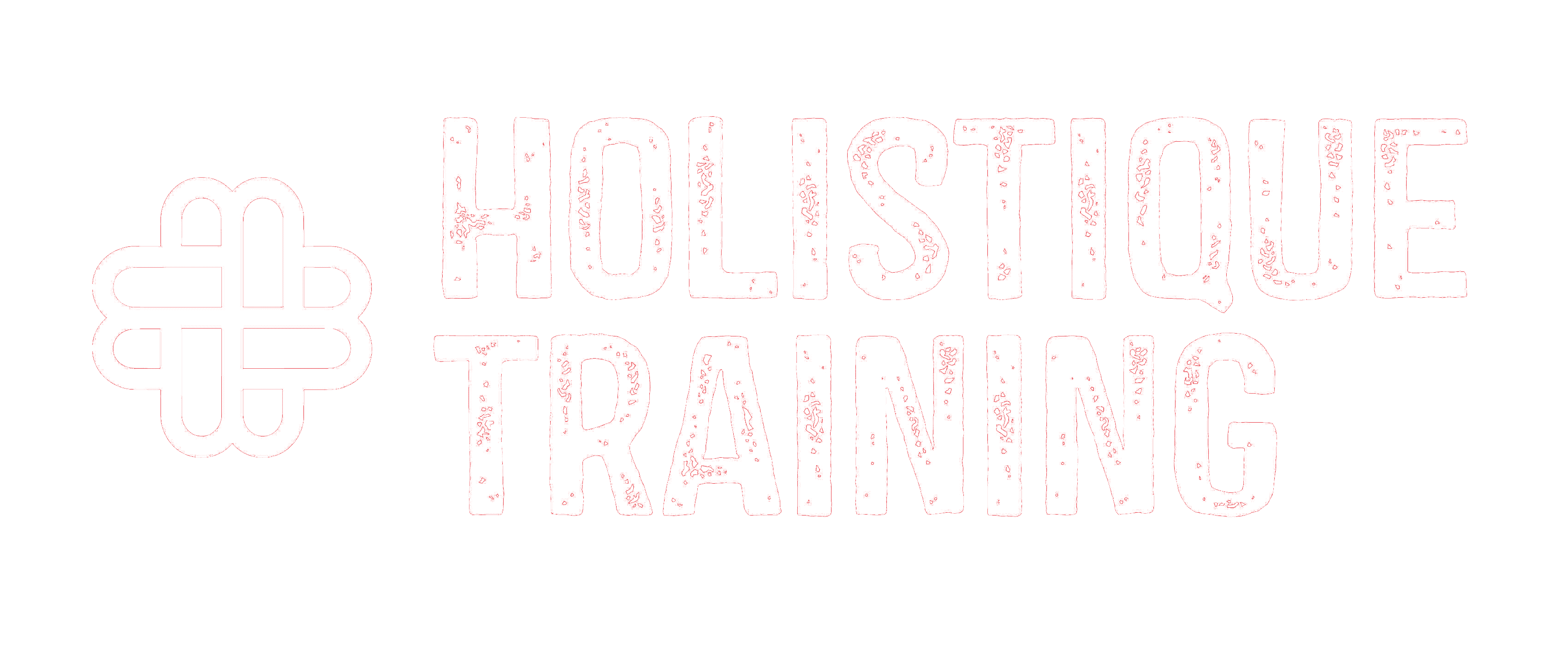- Table of Contents
- Why Is Social Media Important for Your Small Business?
- What Is a Social Audience?
- Target Audience vs. Customer Persona
- How to Determine Your Social Audience
- 8 Tips for Targeting Your Social Media Audience
- Best Practices in Social Media Management
- Target Audience Examples
- The Role of Social Media Advertising
- Leveraging User-Generated Content
- Conclusion
With the digital landscape evolving at an unprecedented pace, the influence of social media has undergone a remarkable transformation. From its origins as a personal communication platform, it has evolved into a potent tool that businesses, especially small enterprises, can leverage to forge connections with their target audience, amplify brand recognition, and bolster sales. In the ensuing sections, we'll delve into invaluable strategies that can empower your small business to effectively direct its focus on the social media sphere, ensuring optimal outcomes from your endeavours.
Why Is Social Media Important for Your Small Business?
The rise of social media has fundamentally changed the way businesses interact with their customers. With billions of people using platforms like Facebook, Instagram, X (Previously Twitter), and LinkedIn, social media offers an unparalleled avenue to reach a vast and diverse audience. For small businesses, in particular, social media levels the playing field by providing access to the same tools and platforms that larger corporations use. It allows you to build a community around your brand, engage directly with customers, and create a distinct brand identity.
According to Hootsuite, social media's reach extends far beyond large corporations. Surprisingly, 71% of small and medium-sized businesses have embraced social media as a marketing avenue, with a notable 52% maintaining a daily posting frequency. So, make sure you’re keeping up and leveraging the power of social media in your small business.
What Is a Social Audience?
Your social audience comprises the group of individuals who follow, interact with, and engage with your brand on social media platforms. These are the people who resonate with your content, share your posts, and potentially become your loyal customers. Understanding your social audience is crucial as it enables you to tailor your content and communication to their preferences, ensuring your messages resonate and drive engagement.
Target Audience vs. Customer Persona
When it comes to devising effective social media strategies, understanding your audience is pivotal. However, this understanding isn’t a one-size-fits-all concept; it's a multifaceted process that involves dissecting your audience into two fundamental components: the target audience and customer personas.
1. Target Audience:
Your target audience represents the broader group of individuals you aim to reach with your social media efforts. This group is defined by general demographics, interests, and behaviours. For instance, a fitness apparel brand might define its target audience as fitness enthusiasts between the ages of 18-35 who prioritise comfort and style in their workout attire. This demographic information is foundational, providing a basic outline of the people you want to appeal to.
However, understanding your target audience at this level is akin to knowing the tip of the iceberg. While it gives you an overview, it lacks the depth necessary to create truly impactful and personalised content.
2. Customer Persona:
This is where customer personas come into play. Unlike the target audience, customer personas are detailed, semi-fictional characters that represent your ideal customers. They encompass not only demographic data but also psychographic details, motivations, pain points, preferences, and even a name and a face, giving them a human touch. These personas are created through extensive research and analysis, often involving surveys, interviews, and market research.
Let’s take an example to illustrate the difference:
Target Audience:
Demographic: Women, aged 18-25, interested in fashion.
Behaviour: Shops online frequently for clothing and accessories.
Customer Persona (Example: Lily, the Fashion Enthusiast):
Demographic: Female, 22 years old.
Psychographics: Fashion-forward, loves experimenting with unique styles, values sustainability, shops for exclusive and eco-friendly fashion items.
Motivations: Seeks trendy clothing that aligns with her values, wants to support ethical and sustainable brands.
Pain Points: Struggles to find affordable sustainable fashion, seeks genuine brand stories and transparency.
Creating a customer persona like Lily humanises your audience. It helps you understand not only what she buys but why she buys it. This deep understanding allows you to tailor your content in a way that genuinely resonates with Lily and others like her, addressing their specific needs, desires, and pain points. For instance, your social media content for Lily might focus on showcasing your brand’s commitment to sustainability, featuring behind-the-scenes looks at your eco-friendly production processes, and highlighting customer testimonials that align with her values.
Incorporating customer personas into your social media strategy enables you to craft messages that evoke emotional responses, fostering a stronger connection with your audience. It allows you to anticipate their needs, answer their questions before they ask, and ultimately, build a community of loyal customers.
By distinguishing between your target audience and customer personas, you create a strategic framework that not only broadens your reach but also deepens your impact, ensuring that your social media efforts are not just seen but genuinely felt by the people you most want to connect with. Remember, in the world of social media, personalisation is key, and customer personas are the compass guiding you toward truly meaningful interactions with your audience.
How to Determine Your Social Audience
Understanding your social audience involves a combination of data analysis and market research. Here's how you can go about it:
1. Analyse Your Current Audience
Analysing your current social media followers provides valuable insights into the demographics, locations, and behaviours of people already interested in your brand. Social media analytics tools offer a detailed breakdown, showing you not just who follows you, but also when they are most active, what content they engage with, and which posts generate the most interaction. By understanding your existing audience, you can refine your content to cater specifically to their preferences, thereby enhancing engagement and retention rates.
2. Conduct Surveys
Surveys are a direct route to understanding your audience's preferences, interests, and pain points. By crafting well-designed surveys and distributing them through social media platforms or email newsletters, you invite your audience to share their thoughts. This feedback loop not only provides quantitative data but also qualitative insights into their motivations and desires. Surveys empower you to align your content and offerings precisely with what your audience seeks, ensuring your social media presence is both relevant and impactful.
3. Competitor Analysis
Analysing your competitors' social media accounts serves as a strategic reconnaissance mission. By examining the demographics and interests of their followers, you gain a broader perspective on potential audience segments. This comparative analysis helps you identify gaps in your own strategy and unearth new opportunities. Understanding what captivates your competitors' audiences enables you to tailor your content to stand out, offering something unique and compelling that they might be missing.
4. Social Listening
Social listening, facilitated by tools like Mention or Brandwatch, allows you to eavesdrop on social media conversations related to your industry. By monitoring discussions, trends, and sentiments, you gain valuable insights into the topics that pique your potential audience’s interest. Social listening not only helps you stay ahead of industry trends but also guides you in creating content that resonates with the broader online community. It’s akin to having your ear to the ground, enabling you to respond swiftly to emerging themes and conversations, thereby maximising your social media impact.
8 Tips for Targeting Your Social Media Audience
Now that you have a grasp on the basics, here are five expert tips to effectively target your social media audience:
1. Segmentation is Key
Dividing your audience into segments based on demographics, interests, behaviours, or purchase history is essential for targeted communication. For instance, an online fashion retailer might segment their audience into categories like casual wear, formal wear, and accessories enthusiasts. By tailoring content specific to each segment, you're not only acknowledging the diversity of your audience but also delivering messages that resonate deeply. This personalised approach enhances engagement and boosts conversion rates as your audience feels understood and valued. Not only that but also according to HubSpot,
implementing segmentation led to websites being two to five times more effective than those offering uniform content to all users.
2. Content Relevance and Variety
Once you've segmented your audience, creating content that speaks directly to each group is vital. Whether it's informative blog posts, visually appealing images, engaging videos, or interactive polls, diversifying your content keeps your audience engaged. Providing valuable insights, industry news, and tips tailored to each segment showcases your expertise and positions your brand as a valuable resource. This variety not only captures different preferences within your audience but also keeps your social media feeds vibrant and dynamic, encouraging regular interactions.
3. Consistent Brand Voice
Maintaining a consistent brand voice across all social media channels is akin to having a familiar friend in the digital realm. Whether your tone is casual and playful or formal and informative, consistency fosters brand recognition and builds trust. When your audience encounters a consistent voice, they develop a sense of familiarity, strengthening their emotional connection with your brand. This coherence in messaging ensures that, regardless of the platform, your audience experiences a unified and recognisable brand identity, enhancing brand loyalty and credibility.
4. Engage and Interact
Social media is inherently social, and interaction is the heart of its appeal. Responding promptly to comments, messages, and mentions showcases your commitment to customer satisfaction. Moreover, initiating conversations by posing questions, conducting polls, or soliciting opinions creates a sense of community. Encouraging user-generated content (UGC), where your audience contributes to your brand’s narrative, not only fosters a sense of belonging but also serves as authentic testimonials, reinforcing your brand’s credibility. Actively engaging with your audience transforms them from passive observers to active participants, strengthening their connection with your brand.
5. Data-Driven Optimisation
Utilising data is the cornerstone of effective social media strategies. Regularly analysing the performance of your social media campaigns provides invaluable insights. Metrics such as engagement rates, click-through rates, and conversion rates offer quantitative feedback on your content's impact. A/B testing, where you experiment with different types of content, posting schedules, and calls-to-action, enables you to identify what resonates best with your audience. By interpreting this data, you can refine your strategies, focusing on what works while adjusting or eliminating less effective approaches. This iterative process ensures your social media efforts remain adaptive and dynamic, maximising their efficiency and impact over time.
6. Emotional Connection
Creating an emotional bond with your audience is a powerful strategy. Share authentic stories, testimonials, or behind-the-scenes glimpses of your business. Emotions drive decisions, and when your audience connects with the human side of your brand, they become more invested. Whether it's a heartwarming customer success story or a passionate team member sharing their experiences, these emotional connections forge lasting relationships. Encourage your audience to share their stories too, fostering a sense of belonging within your community.
7. Timely and Trend-Relevant Content
Staying relevant in the fast-paced world of social media requires keeping an eye on current events and trends. Incorporating timely topics or trending hashtags into your content can significantly increase visibility. Whether it's a national holiday, a popular event, or a viral meme, aligning your content with these trends showcases your brand’s awareness and relatability. However, ensure the relevance is genuine; forced or inappropriate associations can backfire. By tapping into these trends thoughtfully, you not only capture attention but also demonstrate that your brand is dynamic and responsive to the world around it.
8. Collaborations and Influencer Partnerships
Teaming up with influencers or other businesses can expand your reach significantly. Influencers, who have already cultivated trust and credibility with their followers, can introduce your brand to a wider audience. Choose influencers whose values align with your brand, ensuring authenticity in their endorsements. Collaborative events, giveaways, or joint content creation not only introduce your brand to new audiences but also provide social proof, reinforcing your brand's reliability. Such partnerships amplify your social media impact, leveraging the trust influencers have established, and can lead to substantial growth in your follower base and customer engagement.
Best Practices in Social Media Management
To ensure your social media targeting strategies are effective, consider these best practices:
Consistency
Maintaining a consistent posting schedule is more than just about staying active; it's about building a rhythm with your audience. Regular and predictable posts create anticipation among your followers, keeping them engaged and looking forward to your content. Consistency also reinforces your brand presence, ensuring your audience doesn't forget about you amidst the social media noise.
Quality over Quantity
While frequency is important, the quality of your content takes precedence. High-quality content not only captures attention but also retains it. Invest time in creating visually appealing images, well-crafted captions, and informative videos. Thoughtful and well-researched posts showcase your expertise, building credibility and trust. Quality content also encourages sharing, broadening your reach organically.
Staying Current
Social media platforms are constantly evolving, introducing new features and algorithms. Staying abreast of these changes is essential. Adapting your content to suit the latest trends and platform updates ensures your posts remain relevant and visible. Additionally, embracing emerging trends, such as short-form videos or interactive live sessions, showcases your brand's innovation and willingness to engage with your audience in novel ways.
Use Hashtags Wisely
Hashtags are powerful tools to increase the visibility of your posts. Research and incorporate relevant hashtags specific to your industry or niche. Utilise trending hashtags related to your content to tap into larger conversations. However, avoid overusing hashtags, as it can make your posts look spammy. A strategic mix of popular, niche, and branded hashtags amplifies the reach of your content, connecting you with a wider and more relevant audience.
Monitor Competitors
Keeping an eye on your competitors' social media activities offers invaluable insights. Analyse what works for them and identify gaps in their strategies that you can fill. By understanding their successes and failures, you can refine your own approach. This doesn’t mean copying their strategies; instead, it provides a benchmark against which you can measure your own performance and innovate. Monitoring competitors also helps you identify emerging trends and customer preferences in your industry.
Incorporating these best practices into your social media management ensures your efforts are strategic, effective, and in tune with the ever-changing digital landscape. It's not just about being present on social media; it's about being present with purpose, delivering high-quality content, staying relevant, and engaging with your audience in meaningful ways.
Target Audience Examples
To illustrate these strategies, let's consider a few target audience examples:
Fitness Apparel Brand
Targeting fitness enthusiasts aged 18-35 who value comfort and style in their workout attire. Create content that showcases your brand's unique selling points and encourages a healthy lifestyle.
Tech Startup
Targeting professionals aged 25-40 interested in cutting-edge technology. Share industry insights, how-to guides, and case studies that highlight the benefits of your product.
Local Coffee Shop
Targeting locals aged 18-45 who appreciate artisanal coffee. Share behind-the-scenes glimpses, customer testimonials, and special promotions to foster a sense of community.
The Role of Social Media Advertising
In today's competitive digital landscape, social media advertising plays a pivotal role in ensuring your brand stands out amidst the online clutter. It goes beyond organic reach, allowing you to target specific audiences, track performance, and maximise your return on investment. Let’s explore the multifaceted role social media advertising plays in your overall marketing strategy:
Targeted Audience Reach
Social media platforms offer robust advertising tools that enable precise audience targeting based on demographics, interests, behaviours, and even past interactions. This targeted approach ensures your ads are shown to the people most likely to be interested in your products or services. For instance, a beauty brand can target individuals interested in skincare products, thereby reaching a relevant and engaged audience. By narrowing your focus, you not only increase the efficiency of your campaigns but also optimise your budget by reaching those most likely to convert.
Enhanced Visibility and Brand Awareness
Social media advertising provides an immediate boost to your brand's visibility. Sponsored posts and ads appear prominently in users' feeds, increasing the likelihood of users noticing and engaging with your content. Consistent exposure builds brand awareness, making your business more recognisable to potential customers. Over time, this increased visibility translates into brand recall, ensuring that your business comes to mind when users require products or services in your niche.
Table 2: Effectiveness metrics for social media ads
Metric | Description | Importance |
Click-Through Rate (CTR) | Percentage of users who clicked the ad | Measures Engagement |
Conversion Rate | Percentage of visitors who completed desired action | Measures Effectiveness |
Cost Per Click (CPC) | Cost for each click on the ad | Measures Budget Efficiency |
Return on Ad Spend (ROAS) | Revenue earned for every dollar spent | Measures ROI |
Ad Relevance Score | Quality and relevance of the ad | Ensures User Engagement |
Driving Website Traffic and Conversions
Social media ads are powerful drivers of website traffic. By including compelling calls-to-action (CTAs) in your ads, such as "Shop Now" or "Learn More," you guide users directly to your website. Landing pages optimised for conversions can then capture leads or facilitate direct sales. Social media advertising, when integrated with a well-designed website, creates a seamless user journey, from the initial ad click to the final purchase. Tracking tools allow you to measure the traffic generated by your ads, providing valuable insights into user behaviour and preferences.
Boosting Engagement and Interactions
Paid social media campaigns are not limited to static ads; they can also include interactive formats like polls, quizzes, and carousel ads. These interactive elements enhance user engagement, encouraging users to participate and spend more time interacting with your brand. For example, a restaurant can run a poll asking users to vote for their favourite dish, fostering engagement while collecting valuable feedback. Interactive ads not only entertain users but also create a memorable brand experience, increasing the likelihood of users sharing the content, thus amplifying your reach organically.
Remarketing and Customer Retention
Social media advertising allows you to implement powerful remarketing strategies. By targeting users who have previously interacted with your website or app, you can re-engage them with tailored ads. For instance, an e-commerce store can show ads featuring products that users viewed but didn’t purchase. Remarketing keeps your brand in the minds of potential customers, reminding them of products or services they were interested in. Additionally, social media advertising can be used to retain existing customers by promoting loyalty programmes, special offers, or exclusive content to reward their continued support.
In essence, social media advertising acts as a catalyst, propelling your brand's visibility, engagement, and conversions to new heights. When strategically implemented, it not only expands your reach but also nurtures relationships with your audience, driving sustained growth and ensuring your brand remains at the forefront of your customers' minds.
Leveraging User-Generated Content
User-Generated Content (UGC) is a potent tool that can transform your social media presence from one-sided communication to a dynamic, interactive community. It is so powerful that, according to EveryoneSocial, UGC leads to a 29% increase in web conversions compared to campaigns or websites lacking it. By encouraging your audience to create and share content related to your brand, you not only amplify your reach but also cultivate trust and authenticity.
Building Trust Through Authenticity:
UGC serves as genuine endorsements from real people, showcasing their experiences with your products or services. When potential customers see others like them sharing positive experiences, it builds trust. Unlike polished marketing content, UGC is raw, unfiltered, and authentic, resonating profoundly with your audience. Whether it’s a customer sharing an unboxing video, a review, or a photo using your product, these authentic testimonials humanise your brand, making it relatable and trustworthy.
Fostering a Sense of Community:
Encouraging UGC creates a sense of community around your brand. When your customers actively participate in shaping your brand story, they feel a sense of ownership. They become more than just consumers; they become brand advocates. By creating a dedicated hashtag for UGC and showcasing the best posts on your social media profiles or website, you celebrate your customers. This acknowledgment not only honours their loyalty but also motivates others to participate, further strengthening the sense of belonging within your community.
Amplifying Reach and Engagement:
UGC significantly extends your organic reach. When users share their content, it’s seen not just by your followers but also by their networks, exponentially increasing your brand’s visibility. This organic dissemination lends credibility, as recommendations from peers often carry more weight than traditional advertisements. Moreover, UGC generates higher engagement rates. Posts featuring real people enjoying your products or services tend to garner more likes, comments, and shares, fostering a lively and interactive social media environment.
Encouraging Creativity and Innovation:
UGC often surprises with its creativity. Your customers might come up with innovative ways to use your products or share artistic interpretations related to your brand. This creativity not only showcases your brand in diverse contexts but also sparks inspiration. User-generated content can provide you with fresh ideas for your marketing campaigns, product features, or even future collaborations. By appreciating and encouraging this creativity, you foster a mutually beneficial relationship where your customers feel valued, and your brand continues to evolve creatively.
Monitoring and Acknowledging UGC:
Regularly monitor social media platforms for UGC related to your brand. Tools like social media listening software can help you track mentions and hashtags effectively. Acknowledge and appreciate UGC by responding to the posts, sharing them on your official channels, or even featuring them on your website. This acknowledgment reinforces the cycle, encouraging more users to participate. Remember to seek permission before sharing any UGC, respecting your customers' privacy and rights.
Incorporating User-Generated Content into your social media strategy not only expands your reach but also transforms your brand into a living, breathing entity shaped by the voices of your customers. By fostering authenticity, community, and creativity, you not only boost engagement but also build a loyal customer base founded on genuine connections and trust.
Conclusion
Effective social media targeting requires a deep understanding of your audience's preferences, behaviours, and aspirations. By segmenting your audience, creating relevant content, maintaining a consistent brand voice, engaging with your followers, and analysing data, your small business can harness the power of social media to build lasting connections and drive growth. Remember, it's not just about stating information, but about crafting a strategy that resonates with your audience on a meaningful level.
If you're ready to take your social media prowess to the next level, we’ve got the right course for you. ‘Social Media 101 for Businesses’ will delve even deeper into social media strategies, equipping you with the tools you need to flourish in the ever-evolving digital landscape.






















